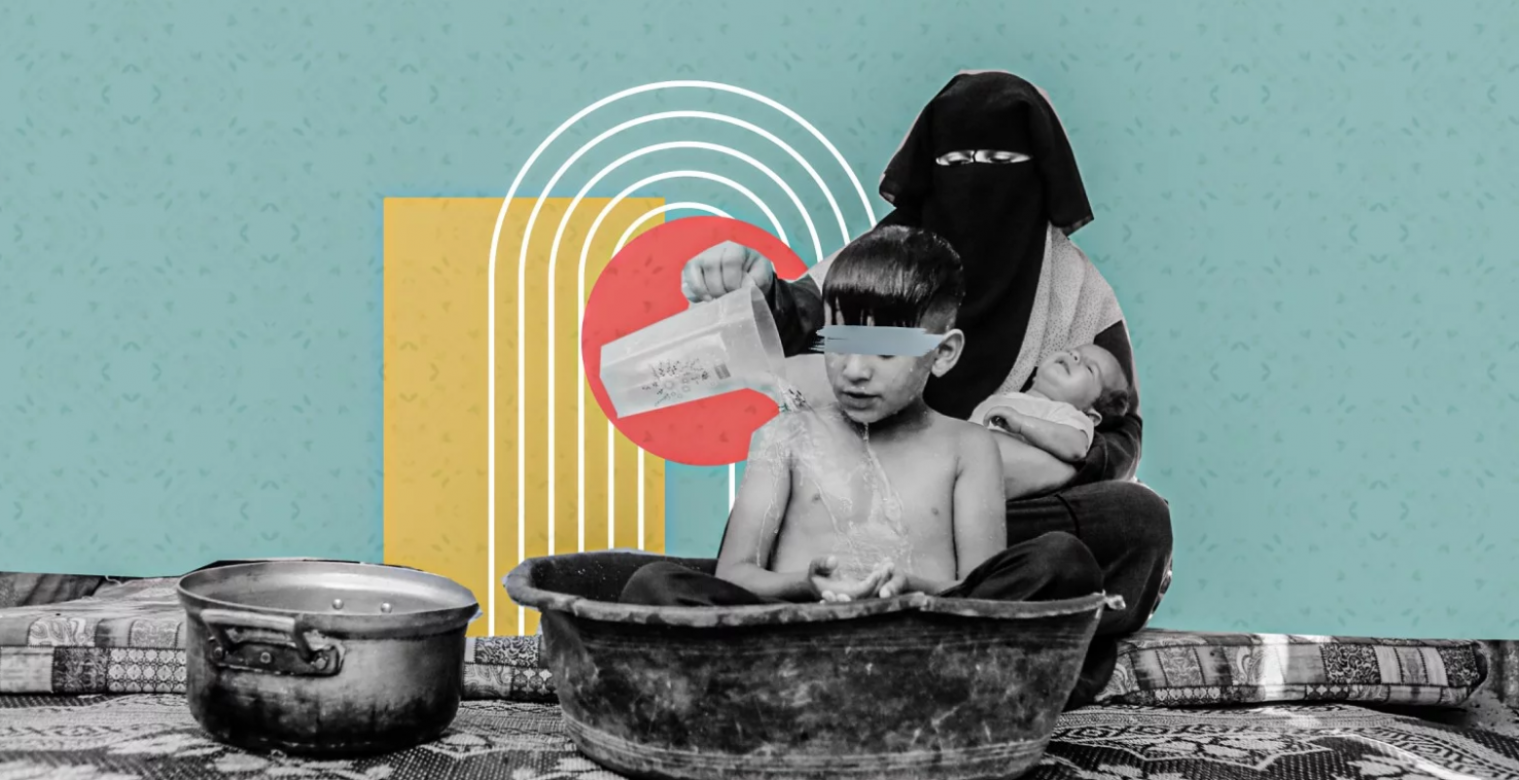Amany Shhada
Gaza Strip appears as a concrete mass in aerial images, due to the proliferation of residential units resulting from high population density. This has a negative impact on many residents, especially women in border areas, who face difficulties in movement and transportation.
The suffering of women is compounded by the transportation crisis, as they bear multiple responsibilities in marginalized areas, which sometimes require them to take on greater responsibility towards their families and the importance of maintaining family health.
This includes traveling to health centers, educational facilities, markets, and more. Additionally, they face extreme challenges in the infrastructure services of the areas in which they reside in general.
The problem is particularly prevalent in the central governorate of the Gaza Strip, which has a population of 220,000, according to government data, and includes seven municipalities responsible for providing services to citizens.
One of these municipalities is Wadi Gaza, which is located geographically in the area between the Gaza and central governorates in the Strip and suffers from limited resources and services, with a built-up area of only 100 dunams.
Nermin Al- Al-Nabaheen, who resides in the village of Juhur al-Dik (affiliated with Wadi Gaza municipality), is one of the women who suffers from distressing physical and psychological conditions due to the poor conditions of the roads in border areas.
Al- Al-Nabaheen told "Last Story": "We have to travel a long distance under the scorching sun in the summer or in the rain in the winter, on uneven dirt roads that cause us pain in our feet, in order to reach a paved road from which we can take a taxi."
Government statistics estimate that only 13% of road areas on maps are paved, while 87% of them are unpaved in the Gaza Strip.
The suffering of residents and women living in border areas in the central governorate is not limited to the problem of roads but extends to the weakness of healthcare services and infrastructure. This is clearly indicated by Sanaa Majdi, who lives in a dilapidated house that does not receive sunlight or lighting except the suspended poles in the ceilings of some nearby houses and is not supplied by the municipal utilities.
You might feel like you have gone back many years when the thirty-year-old woman talks about her daily suffering in washing clothes by hand in a primitive way, due to the lack of electricity or even water supply lines reaching her house.
In a similar situation to Al-Nabaheen, Umuna Abu Rajila, who resides in the eastern part of Khan Yunis city in the southern Gaza Strip, has to walk on an unpaved dirt road for a distance of more than three dunams to reach her agricultural land and tend to her crops.
Although Abu Rajila takes a route surrounded by green grass in all directions, it is fraught with risks and dirt bumps that pedestrians encounter, causing them to stumble and impeding their movement and the movement of livestock that they transport to agricultural lands.
In addition to these problems, the majority of residents in border areas in Khan Yunis, the largest city in terms of area with a population of 438,557, suffer from the presence of stray dogs on these roads at night, making them unsafe.
Particularly, winter poses a heavy challenge for this female farmer, due to the high level of rainfall that floods the land and makes walking on dirt roads difficult, preventing her from reaching her crops and transporting them to the market for sale.
The majority of residents in border areas rely on agriculture to earn a living and support their families, as the eastern areas are an important source providing the food basket for the people of the Strip, accounting for 24.6% of the total cultivated area in the region.
The entire reality contradicts the availability of a wide range of rights that should exist in Palestinian territories, especially the right to decent housing, a safe environment, recreational facilities, and adequate infrastructure.
In light of the absence of all these rights, a correspondent from "Last Story" sought to question the Ministry of Local Government in the Gaza Strip about the roles and procedures they follow to improve the housing and service situation for residents of border areas.
Zuhdi Al-Garyez, an advisor to the Deputy Minister of Local Government, stated that the ministry is aware of the suffering of residents in border areas and is seeking to assist them. However, they refuse to make infrastructure improvements a reason behind encroaching on the remaining agricultural areas. The government aims to preserve the agricultural areas and prevent cement from dominating them amidst the increasing urban sprawl due to the population density, which has reached 2.3 million people in an area of 365 square kilometers.
Most of what the ministry has provided to the residents of border and marginalized areas is subjecting them to the surrounding municipalities, according to Al-Garyez. He stated that these municipalities are better equipped to provide services and facilitate access to water and other necessities. He also mentioned that they are making efforts to provide infrastructure services within the populated areas in those regions.
Al-Garyez attributed the neglect towards those areas and their residents to project funders and donors who focus on providing development projects to densely populated areas, rather than the sparsely populated rural areas, which primarily receive agricultural development projects. He described the Palestinian government (in the West Bank and Gaza Strip) as weak and unable to finance projects on its own.
However, the Ministry of Local Government has sought to obtain a grant for the development and sanitation supplies of the border areas in Khan Yunis city. Al-Garyez stated, "We have taken an interest in this area because it is the largest in terms of area and population density, and we will commence development work in it in the coming months."
Amidst the concerns of donors and the efforts of the Palestinian government, which has been suffering from division for 17 years, the residents who inhabit an area that exceeds two-thirds of the Gaza Strip continue to face problems with mobility and movement due to the lack of road paving. The issues of the residents of border and marginalized areas with the infrastructure of their homes persist without any real and tangible progress on the ground to improve their conditions.





Border Lives: Women Facing Harsh Conditions